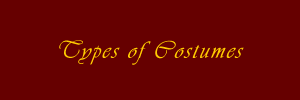

Costumes were the focal point of masquerades. "The eighteenth century divided masquerade costume into three generic types: the domino, or neutral costume; "fancy dress," in which one personated one of a general class of beings; and "character dress," in which one represented a specific figure, usually historical, allegorical, literary, or theatrical character" [1]. Costumes could be abstract or specific: Death and Night often made appearances at masquerades, along with the more tangible sultans and sultanas [2].
Endnotes
1. Castle, Terry. Masquerade and Civilization: the Carnivalesque in Eighteenth-Century
English
Culture and Fiction. Stanford, CA: Stanford University
Press, 1986, 58.
2. Ribiero, Aileen. The Dress Worn at Masquerades in England 1730 to 1790.
New York, NY:
Garland Published, 1984, 34.